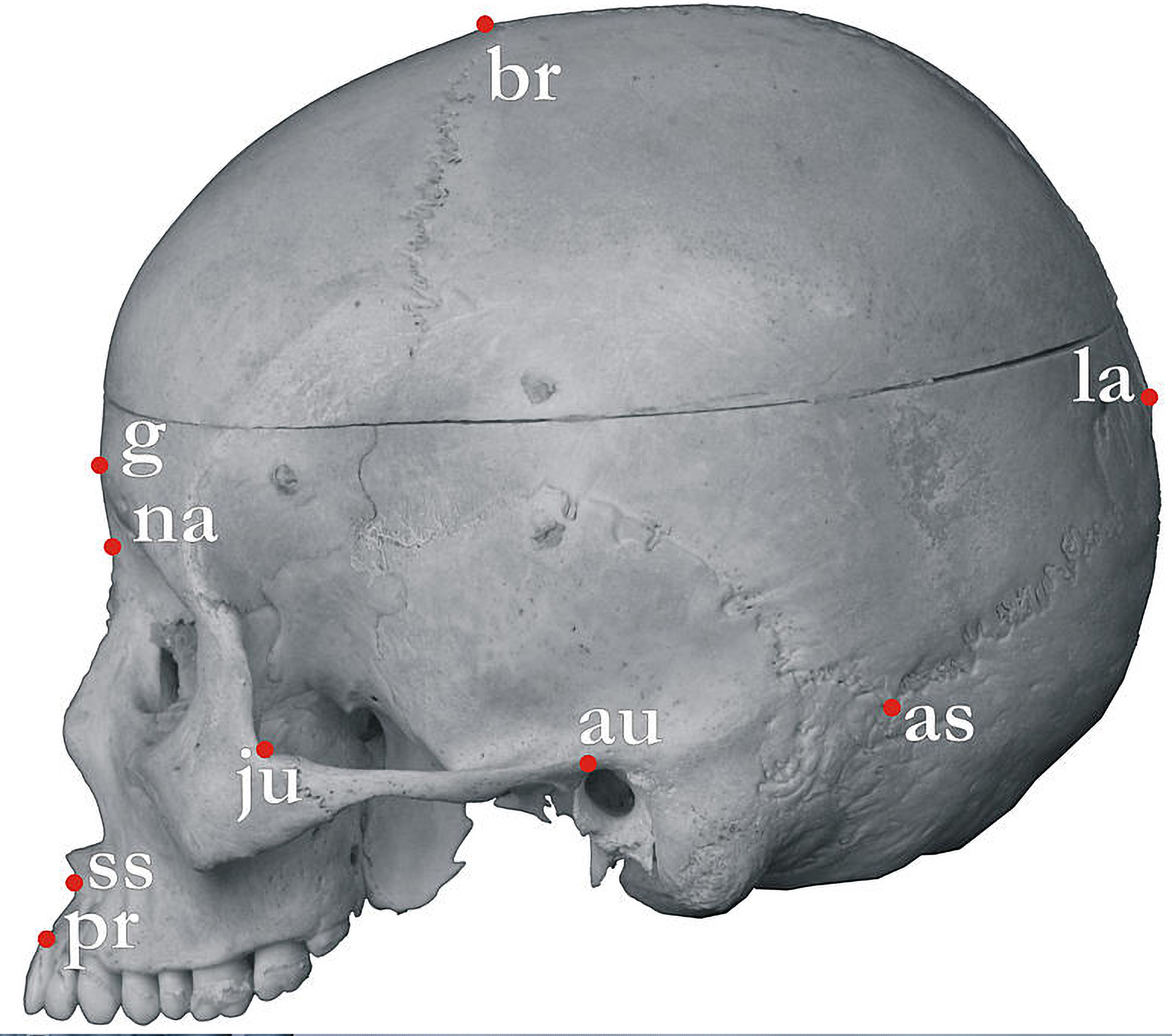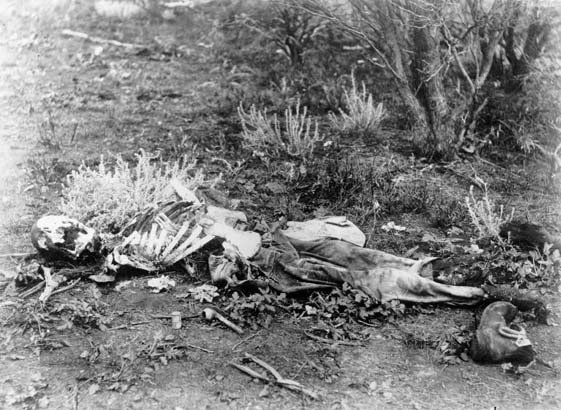|
Osteoware
Osteoware is a free data recording software for human skeletal material that is managed through the Smithsonian Museum of Natural History. It is used by biological anthropologists to, in a standardized and consistent way, document data relevant to research and forensic applications of human skeletal remains. It has influenced other skeletal recording software, and has been successfully used at the Smithsonian for collecting data relevant to biological anthropology. Osteoware is the only free, individual-use software for the collection of data on skeletal material in anthropology. Uses When analyzing a skeletal population or individual, ranging from metric analyses to taphonomic and pathological analyses, the biological anthropologist collects various data. Osteoware is beneficial in that it organizes the range of data collected into a universal format, which is of further use to anthropologists when they need to interpret their data. If, for instance, the focus of the anthropologi ... [...More Info...] [...Related Items...] OR: [Wikipedia] [Google] [Baidu] |
Cranid
CranID was created in 1992 by anthropologist Richard Wright of the University of Sydney to infer the probable geographic origin of unknown crania that are found in archaeological, forensic and repatriation cases. Wright created the program to establish uniformity in cranial morphology based on the assumption that there is a high correlation between geographical location and cranial morphology. This was the first standardized program to evaluate the similarity and dissimilarity of cranial morphological characteristics of an unknown cranium and the database. Software CranID is a free software program that utilizes multivariate linear discriminant analysis and nearest neighbor discriminant analysis in conjunction with 29 cranial measurements to assess the geographic origin, which can be used to infer the ancestry of an unknown cranium. CranID compares an unknown cranium with 74 geographic samples, from 3,163 crania from 39 different populations. The measurements and landmarks used ... [...More Info...] [...Related Items...] OR: [Wikipedia] [Google] [Baidu] |
FORDISC
FORDISC is a software program created by Stephen Ousley and Richard Jantz. It is designed to help forensic anthropologists investigate the identity of a deceased person by providing estimates of the person's size, ethnicity, and biological sex based on the osteological material recovered. Features FORDISC can estimate the sex, ancestry, and stature of a given skeleton via linear discriminant analysis of standard anthropometric measurements. Although created for use in forensic anthropology, many physical anthropologists are still using the program to determine the biological profile of skeletal remains that are considered archaeological in origin. However, the results acquired from such remains may be skewed, as FORDISC is primarily designed for modern populations, which may differ in some factors from historic ones. The use of discriminant function analysis in FORDISC allows the user to sort individuals into specific groups that are defined by certain criteria. The discriminate f ... [...More Info...] [...Related Items...] OR: [Wikipedia] [Google] [Baidu] |
National Museum Of The American Indian Act
The National Museum of the American Indian Act (NMAI) was enacted on November 28, 1989, as Public Law 101-185. The law established the National Museum of the American Indian as part of the Smithsonian Institution. The law also required the Secretary of the Smithsonian to prepare an inventory of all Indian and Native Hawaiian human remains and funerary objects in Smithsonian collections, as well as expeditiously return these items upon the request of culturally affiliated federally recognized Indian tribes and Native Hawaiian organizations. The Smithsonian Institution The NMAI expands the Smithsonian Institution by authorizing erection of a new museum on the National Mall in Washington, D.C., to house Native American artifacts from the Heye Foundation's Museum of the American Indian. As part of a legal compromise regarding the Heye Foundation's New York state charter, the George Gustav Heye Center of the National Museum of the American Indian was also created by the NMAI in the ... [...More Info...] [...Related Items...] OR: [Wikipedia] [Google] [Baidu] |
Smithsonian Museum Of Natural History
The National Museum of Natural History is a natural history museum administered by the Smithsonian Institution, located on the National Mall in Washington, D.C., United States. It has free admission and is open 364 days a year. In 2021, with 7.1 million visitors, it was the eighteenth most visited museum in the world and the second most visited natural history museum in the world after the Natural History Museum in London."The World's most popular museums", CNN.com, 22 June 2017. Opened in 1910, the museum on the National Mall was one of the first Smithsonian buildings constructed exclusively to hold the national collections and research facilities. The main building has an overall area of with of exhibition and public space and houses over 1,000 employees. The museum's collections contain over 145 million specimens of plants, animals, fossils, minerals, rocks, meteorites, human remains, and human cultural artifacts, the largest natural history collection in the world. It is ... [...More Info...] [...Related Items...] OR: [Wikipedia] [Google] [Baidu] |
Jane E
Jane may refer to: * Jane (given name), a feminine given name * Jane (surname), related to the given name Film and television * ''Jane'' (1915 film), a silent comedy film directed by Frank Lloyd * ''Jane'' (2016 film), a South Korean drama film starring Lee Min-ji * ''Jane'' (2017 film), an American documentary film about Jane Goodall * ''Jane'' (2022 film), an American psychological thriller directed by Sabrina Jaglom * Jane (TV series), an 1980s British television series Music * ''Jane'' (album), an album by Jane McDonald * Jane (American band) * Jane (German band) * Jane, unaccompanied and original singer of "It's a Fine Day" in 1983 Songs * "Jane" (Barenaked Ladies song), 1994 * "Jane", a song by Ben Folds Five from their 1999 album ''The Unauthorized Biography of Reinhold Messner'' * "Jane" (Century song) * "Jane", a song by Elf Power * "Jane", a song by EPMD from '' Strictly Business'' * "Jane" (Jefferson Starship song), 1979 * "Jane", a song by the Loved Ones fro ... [...More Info...] [...Related Items...] OR: [Wikipedia] [Google] [Baidu] |
Bioarchaeology
The term bioarchaeology has been attributed to British archaeologist Grahame Clark who, in 1972, defined it as the study of animal and human bones from archaeological sites. Redefined in 1977 by Jane Buikstra, bioarchaeology in the United States now refers to the scientific study of human remains from archaeological sites, a discipline known in other countries as osteoarchaeology, osteology or palaeo-osteology. Compared to bioarchaeology, osteoarchaeology is the scientific study that solely focus on the human skeleton. The human skeleton is used to tell us about health, lifestyle, diet, mortality and physique of the past. Furthermore, palaeo-osteology is simple the study of ancient bones. In contrast, the term bioarchaeology is used in Europe to describe the study of all biological remains from archaeological sites. Although Clark used it to describe just human remains and animal remains (zoology/archaeozoology), increasingly modern archaeologists also include botanical remains (bot ... [...More Info...] [...Related Items...] OR: [Wikipedia] [Google] [Baidu] |
Forensic Anthropology
Forensic anthropology is the application of the anatomical science of anthropology and its various subfields, including forensic archaeology and forensic taphonomy, in a legal setting. A forensic anthropologist can assist in the identification of deceased individuals whose remains are decomposed, burned, mutilated or otherwise unrecognizable, as might happen in a plane crash. Forensic anthropologists are also instrumental in the investigation and documentation of genocide and mass graves. Along with forensic pathologists, forensic dentists, and homicide investigators, forensic anthropologists commonly testify in court as expert witnesses. Using physical markers present on a skeleton, a forensic anthropologist can potentially determine a person's age, sex, stature, and race. In addition to identifying physical characteristics of the individual, forensic anthropologists can use skeletal abnormalities to potentially determine cause of death, past trauma such as broken bones or me ... [...More Info...] [...Related Items...] OR: [Wikipedia] [Google] [Baidu] |
Provenience
Provenance (from the French ''provenir'', 'to come from/forth') is the chronology of the ownership, custody or location of a historical object. The term was originally mostly used in relation to works of art but is now used in similar senses in a wide range of fields, including archaeology, paleontology, archives, manuscripts, printed books, the circular economy, and science and computing. The primary purpose of tracing the provenance of an object or entity is normally to provide contextual and circumstantial evidence for its original production or discovery, by establishing, as far as practicable, its later history, especially the sequences of its formal ownership, custody and places of storage. The practice has a particular value in helping authenticate objects. Comparative techniques, expert opinions and the results of scientific tests may also be used to these ends, but establishing provenance is essentially a matter of documentation. The term dates to the 1780s in English ... [...More Info...] [...Related Items...] OR: [Wikipedia] [Google] [Baidu] |
Douglas H
Douglas may refer to: People * Douglas (given name) * Douglas (surname) Animals *Douglas (parrot), macaw that starred as the parrot ''Rosalinda'' in Pippi Longstocking *Douglas the camel, a camel in the Confederate Army in the American Civil War Businesses * Douglas Aircraft Company * Douglas (cosmetics), German cosmetics retail chain in Europe * Douglas (motorcycles), British motorcycle manufacturer Peerage and Baronetage * Duke of Douglas * Earl of Douglas, or any holder of the title * Marquess of Douglas, or any holder of the title * Douglas Baronets Peoples * Clan Douglas, a Scottish kindred * Dougla people, West Indians of both African and East Indian heritage Places Australia * Douglas, Queensland, a suburb of Townsville * Douglas, Queensland (Toowoomba Region), a locality * Port Douglas, North Queensland, Australia * Shire of Douglas, in northern Queensland Belize * Douglas, Belize Canada * Douglas, New Brunswick * Douglas Parish, New Brunswick * Douglas, O ... [...More Info...] [...Related Items...] OR: [Wikipedia] [Google] [Baidu] |
United States Congress
The United States Congress is the legislature of the federal government of the United States. It is bicameral, composed of a lower body, the House of Representatives, and an upper body, the Senate. It meets in the U.S. Capitol in Washington, D.C. Senators and representatives are chosen through direct election, though vacancies in the Senate may be filled by a governor's appointment. Congress has 535 voting members: 100 senators and 435 representatives. The U.S. vice president has a vote in the Senate only when senators are evenly divided. The House of Representatives has six non-voting members. The sitting of a Congress is for a two-year term, at present, beginning every other January. Elections are held every even-numbered year on Election Day. The members of the House of Representatives are elected for the two-year term of a Congress. The Reapportionment Act of 1929 establishes that there be 435 representatives and the Uniform Congressional Redistricting Act requires ... [...More Info...] [...Related Items...] OR: [Wikipedia] [Google] [Baidu] |
Biological Anthropology
Biological anthropology, also known as physical anthropology, is a scientific discipline concerned with the biological and behavioral aspects of human beings, their extinct hominin ancestors, and related non-human primates, particularly from an evolutionary perspective. This subfield of anthropology systematically studies human beings from a biological perspective. Branches As a subfield of anthropology, biological anthropology itself is further divided into several branches. All branches are united in their common orientation and/or application of evolutionary theory to understanding human biology and behavior. * Bioarchaeology is the study of past human cultures through examination of human remains recovered in an archaeological context. The examined human remains usually are limited to bones but may include preserved soft tissue. Researchers in bioarchaeology combine the skill sets of human osteology, paleopathology, and archaeology, and often consider the cultural and mo ... [...More Info...] [...Related Items...] OR: [Wikipedia] [Google] [Baidu] |






